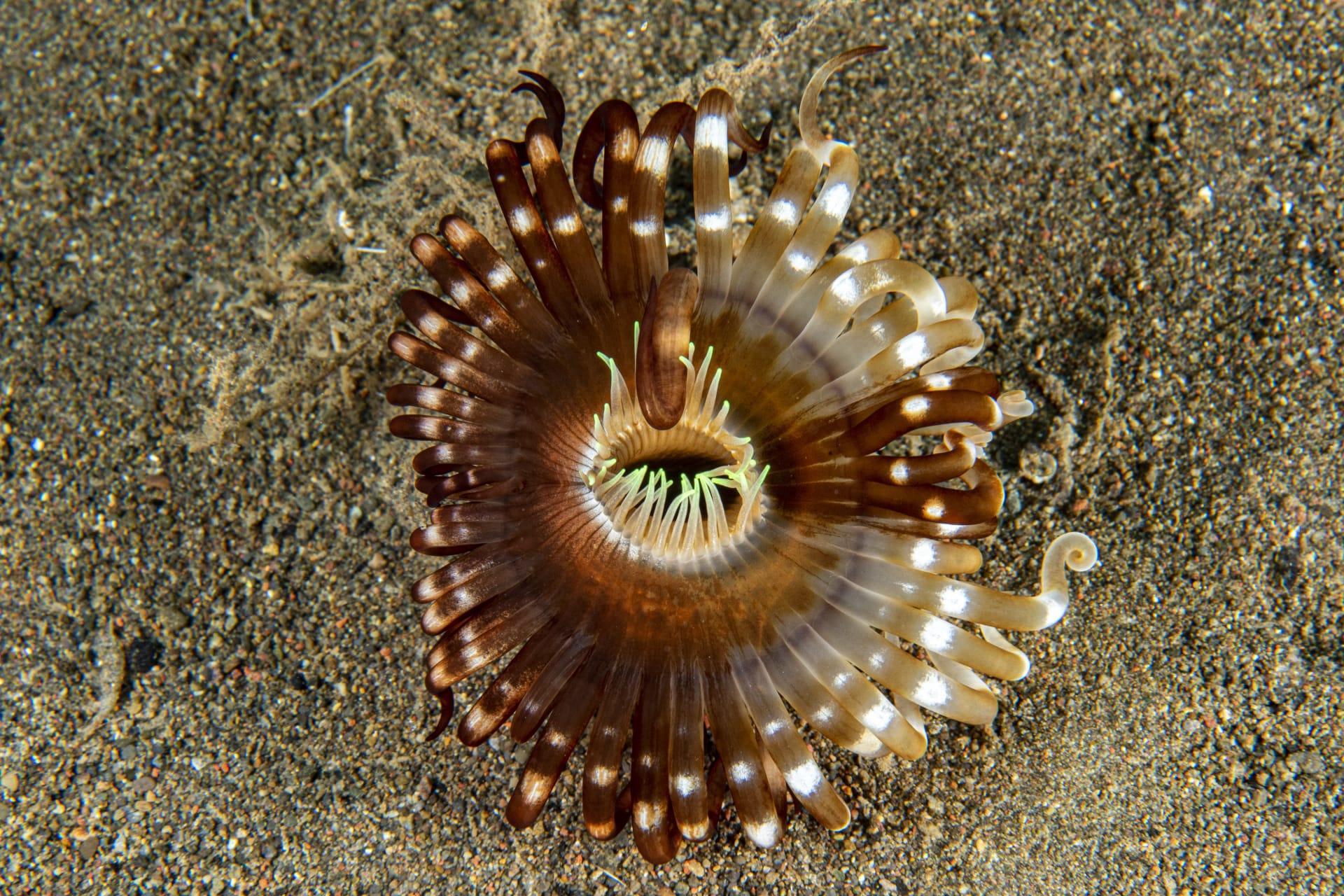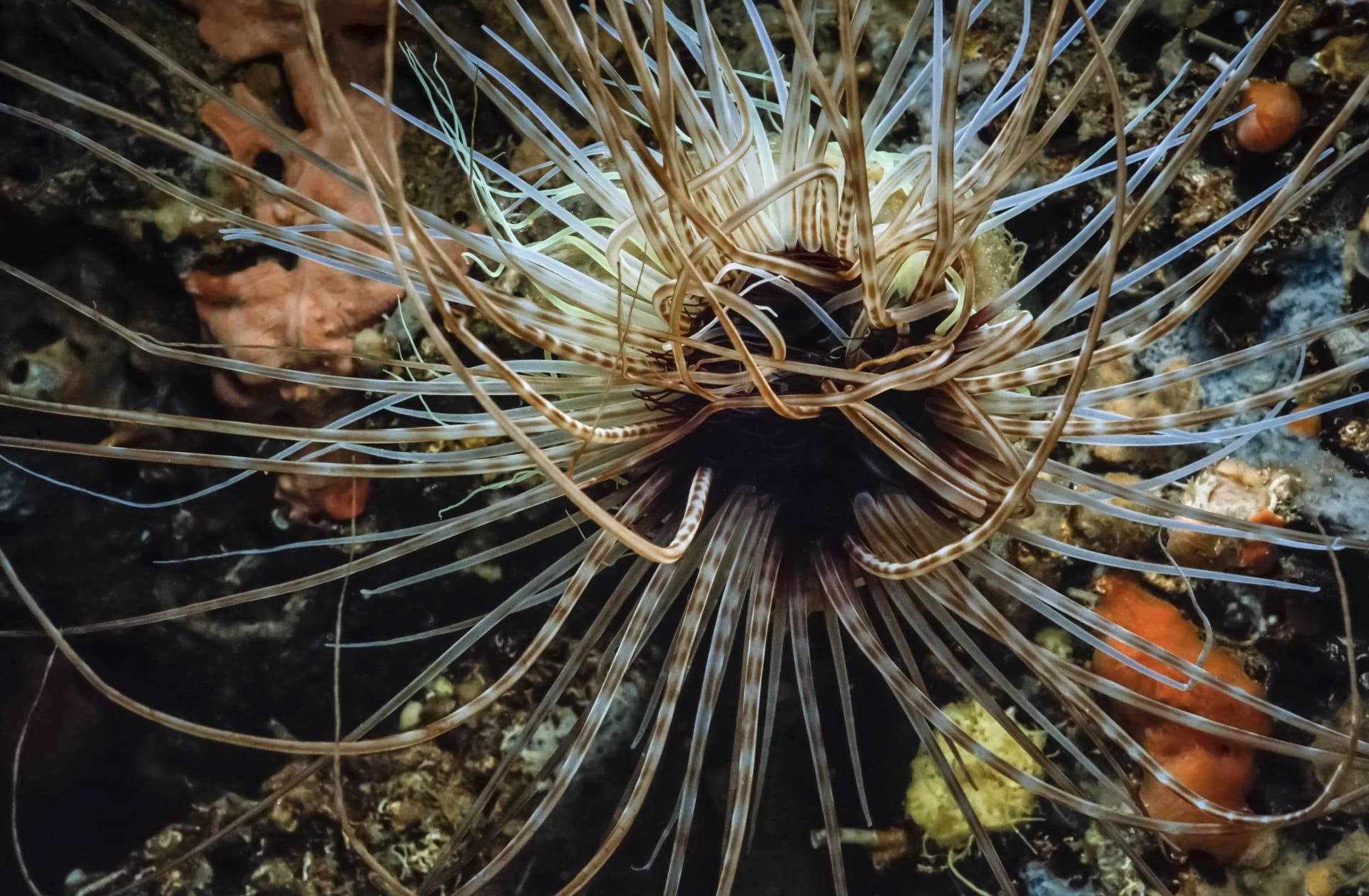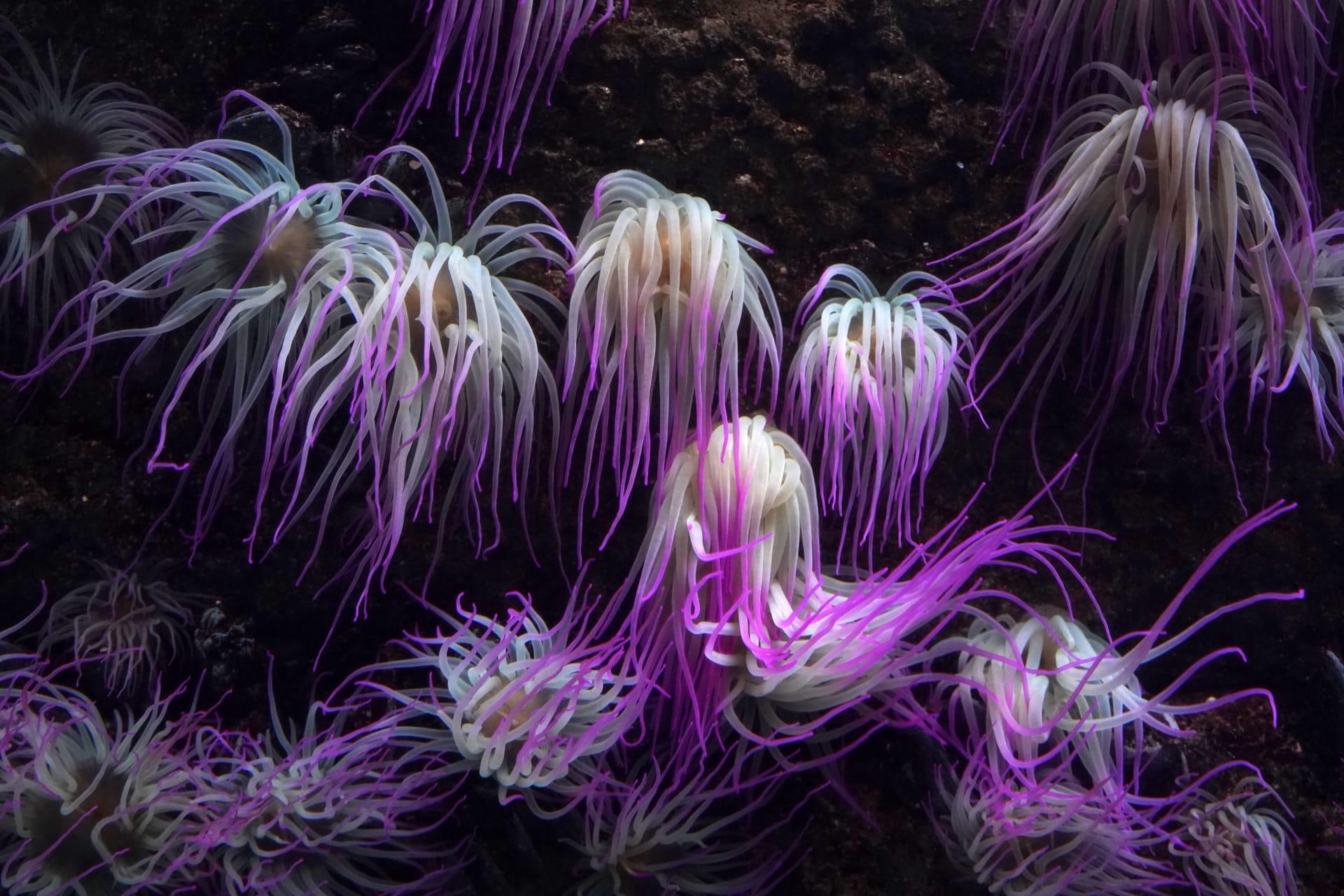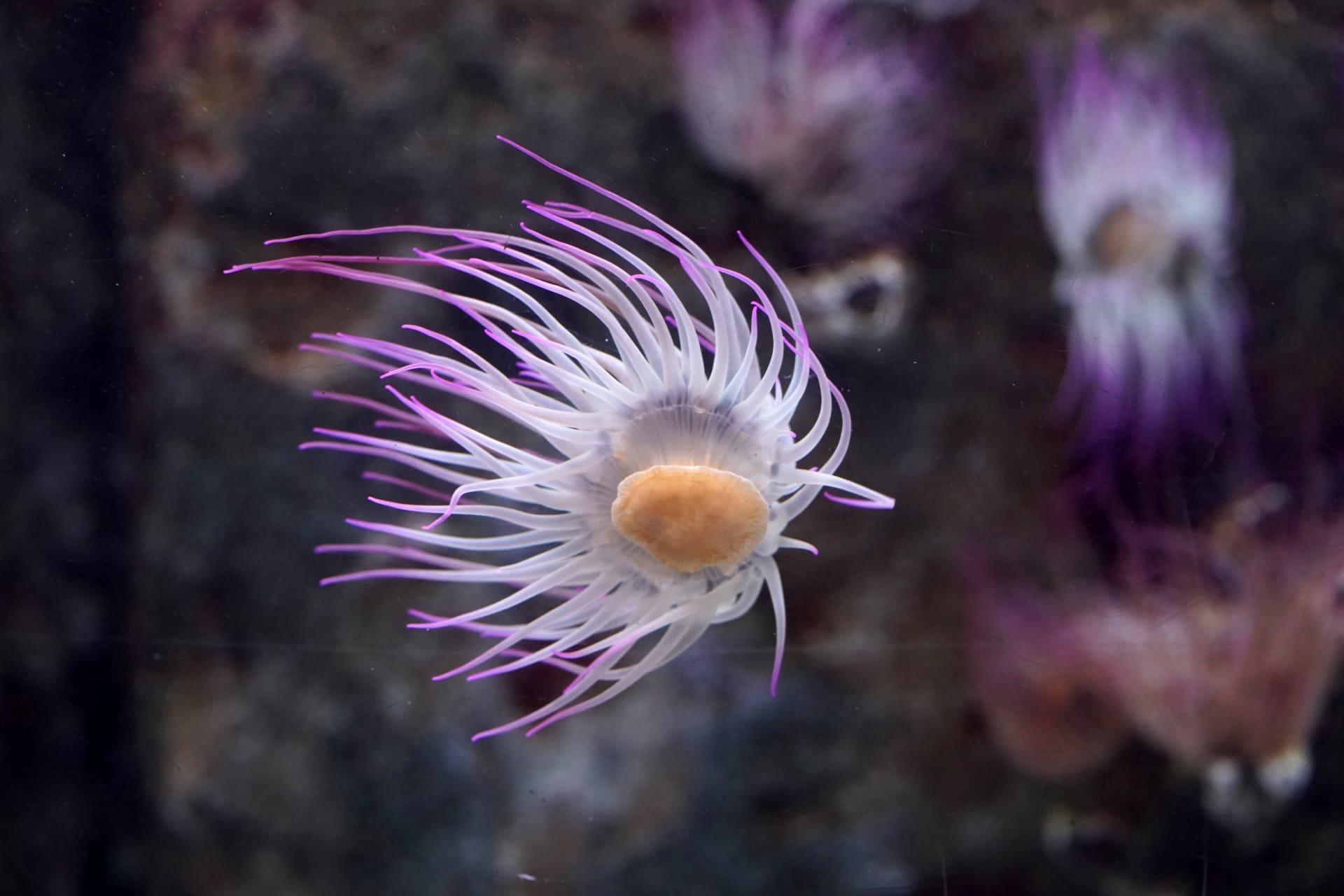Tube Anemone
- Home /
- Mini Encyclopedia /
- Animal /
- Tube Anemone
1
Tube anemones, belonging to the order Ceriantharia, are a fascinating group of marine animals distinct from their more commonly known relatives in the order Actiniaria, which includes the typical sea anemones. Cerianthids are characterized by their unique living arrangement; they dwell in soft sediment habitats, creating and residing within a parchment-like tube made from secreted mucus and sediment particles. This tube serves as a protective retreat into which the anemone can quickly withdraw if threatened. The taxonomy of tube anemones is intricate, with species diversity being high and widely distributed across various oceanic environments, from shallow to deep waters.
Geographically, tube anemones are cosmopolitan, found in oceans around the world, from tropical to temperate regions. Their habitat spans a wide depth range, from intertidal zones to abyssal depths exceeding 10,000 feet. Such distribution highlights their adaptability to diverse environmental conditions, from the sunlit shallows where their vivid colors can be admired, to the shadowy depths of the ocean. In shallower waters, they often adorn coral reefs and sandy bottoms, adding to the biodiversity and visual spectacle of these ecosystems. Their presence in deep-sea environments, often less explored, points to a broader ecological role and adaptability in less hospitable conditions.

2
Question: Are tube anemones related to jellyfish due to their similar appearance and stinging cells?
Answer: Despite their superficial similarities, tube anemones are not closely related to jellyfish. Both possess cnidocytes (stinging cells) used for capturing prey and defense, which often leads to this common misconception. However, tube anemones belong to the Anthozoa class, which includes corals and sea anemones, while jellyfish are part of the Medusozoa class. The two groups diverged early in the evolution of cnidarians, making their similarities more a case of convergent evolution than of close familial ties. Tube anemones' unique tube-dwelling lifestyle and lack of a medusa stage further differentiate them from jellyfish.

3
Tube anemones employ several intriguing survival strategies to thrive in their underwater realms. One key adaptation is their ability to burrow and construct a protective tube, which shields them from predators and environmental hazards. This tube, made from a combination of mucus and sediment, can be quickly repaired or extended as needed, providing a permanent and secure home. Their vibrant, flowing tentacles not only serve an aesthetic function but are also armed with cnidocytes, enabling them to efficiently capture a variety of prey, from small fish to plankton, ensuring a diverse diet.
Another significant aspect of their survival strategy involves their reproductive methods, which include both asexual and sexual reproduction, enhancing their ability to colonize and persist in various environments. Asexually, they can regenerate from fragments, a process that allows rapid population growth and recovery from damage. Sexually, they release gametes into the water column, leading to external fertilization. This diversity in reproductive strategies ensures genetic diversity and adaptability, crucial for enduring in the dynamic marine ecosystems.

4
In marine ecosystems, tube anemones play multifaceted roles that contribute to ecological balance and biodiversity. Their intricate burrows and tubes provide microhabitats for a variety of smaller organisms, offering shelter and breeding grounds. This relationship enhances local biodiversity, supporting a range of species from microfauna to small fish, which in turn attract larger predators, thereby integrating tube anemones into the food web as both prey and predator.
Their role extends beyond structural contributions; tube anemones are also involved in nutrient cycling. By feeding on plankton and small fish, they convert these resources into biomass, which, upon their death or through waste, becomes available to other organisms. This process helps in the distribution of nutrients within the ecosystem, supporting the growth of other marine life forms, from algae to coral reefs, thereby maintaining the health and stability of their habitats.

5
Film: "Secrets of the Deep: Anemone Mysteries" is a captivating documentary produced in the United States in 2018, delving into the enigmatic world of marine anemones, including the lesser-known tube anemones. The film explores the diverse habitats of these creatures, from shallow coral reefs to the dark depths of the ocean floor, showcasing their vital roles in marine ecosystems and their extraordinary survival strategies.
Book: "Beneath the Waves: Exploring the Hidden World of Sea Anemones" is a comprehensive guide authored by Dr. Elizabeth Marino, published in the United Kingdom in 2020. This book provides an in-depth look at the life of sea anemones, including a detailed chapter on tube anemones. Dr. Marino discusses their classification, habitat, and ecological significance, making complex scientific concepts accessible to a broad audience.
Book: "Ocean's Whispers: Tube Anemones and Coral Gardens" by Canadian marine biologist Simon Fletcher, released in 2022, offers a stunning visual and textual journey into the world of tube anemones and their interactions with coral ecosystems. Fletcher combines years of research with underwater photography to highlight the beauty and ecological importance of these often-overlooked marine inhabitants, promoting conservation and awareness of underwater life.